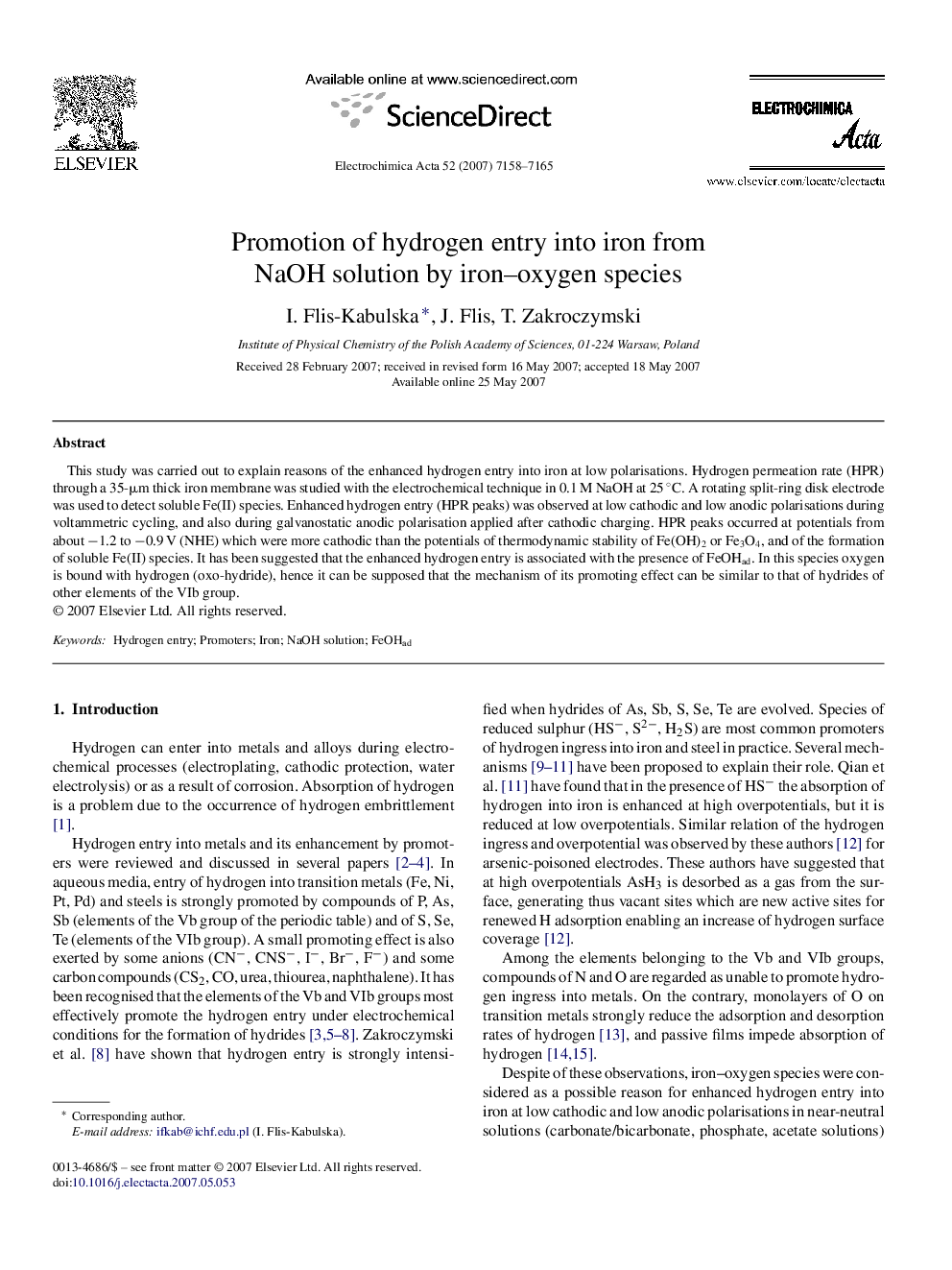| کد مقاله | کد نشریه | سال انتشار | مقاله انگلیسی | نسخه تمام متن |
|---|---|---|---|---|
| 195814 | 459821 | 2007 | 8 صفحه PDF | دانلود رایگان |

This study was carried out to explain reasons of the enhanced hydrogen entry into iron at low polarisations. Hydrogen permeation rate (HPR) through a 35-μm thick iron membrane was studied with the electrochemical technique in 0.1 M NaOH at 25 °C. A rotating split-ring disk electrode was used to detect soluble Fe(II) species. Enhanced hydrogen entry (HPR peaks) was observed at low cathodic and low anodic polarisations during voltammetric cycling, and also during galvanostatic anodic polarisation applied after cathodic charging. HPR peaks occurred at potentials from about −1.2 to −0.9 V (NHE) which were more cathodic than the potentials of thermodynamic stability of Fe(OH)2 or Fe3O4, and of the formation of soluble Fe(II) species. It has been suggested that the enhanced hydrogen entry is associated with the presence of FeOHad. In this species oxygen is bound with hydrogen (oxo-hydride), hence it can be supposed that the mechanism of its promoting effect can be similar to that of hydrides of other elements of the VIb group.
Journal: Electrochimica Acta - Volume 52, Issue 24, 1 August 2007, Pages 7158–7165